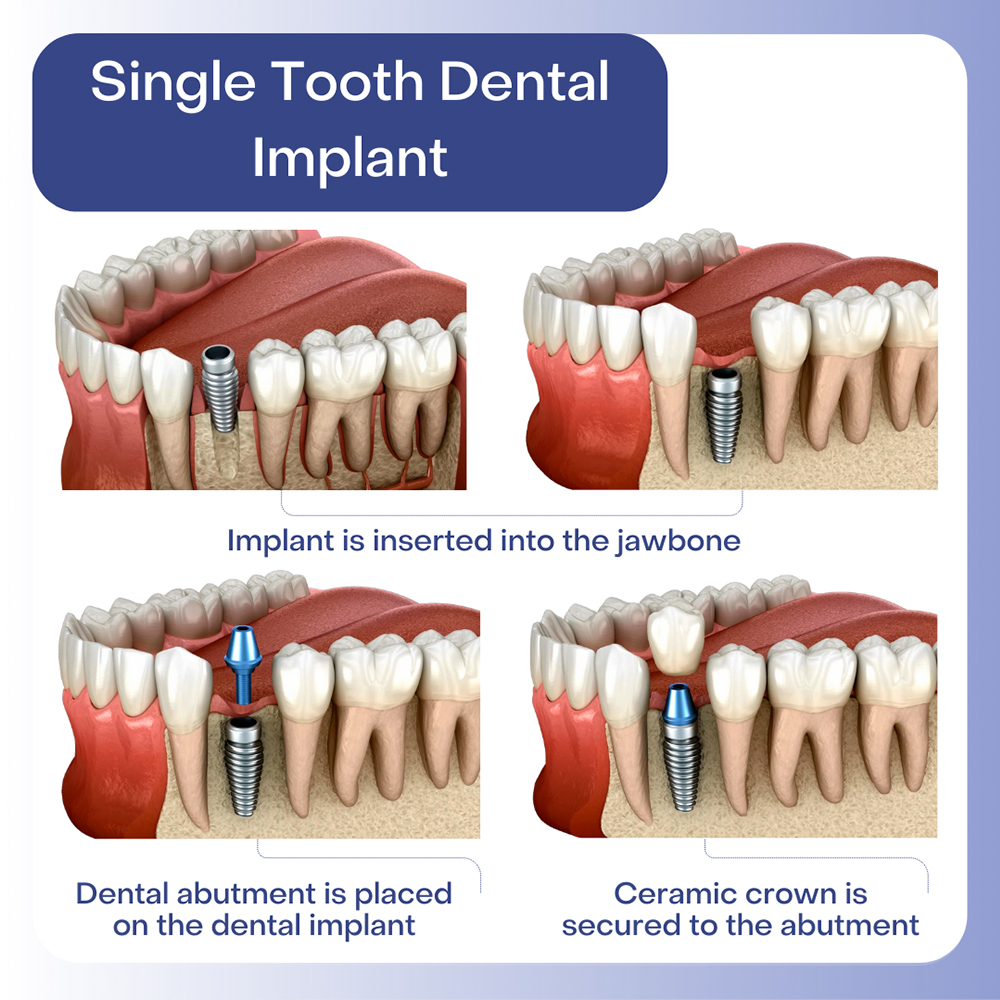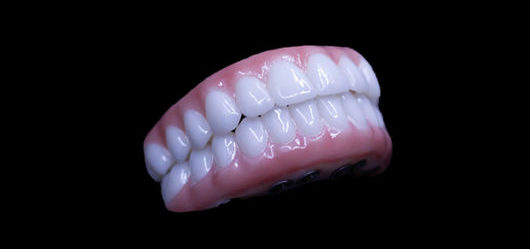The Greatest Guide To Dental Sense
The Greatest Guide To Dental Sense
Blog Article
Not known Factual Statements About Dental Sense
Table of ContentsDental Sense Fundamentals ExplainedRumored Buzz on Dental SenseAll About Dental SenseAn Unbiased View of Dental Sense
are medical tools operatively dental implanted into the jaw to restore a person's capability to chew or their look. They offer support for synthetic (phony) teeth, such as crowns, bridges, or dentures. When a tooth is lost due to injury or illness, an individual can experience difficulties such as rapid bone loss, malfunctioning speech, or changes to chewing patterns that cause discomfort.Oral dental implant systems contain a dental implant body and oral implant joint and might additionally include a joint fixation screw. Dental implant vs bridge. The dental implant body is surgically inserted in the jawbone instead of the tooth's root. The dental implant joint is generally attached to the implant body by the joint addiction screw and extends via gums right into the mouth to sustain the connected synthetic teeth
(http://peterjackson.mee.nu/do_you_ever_have_a_dream#c2310)Structure of The Dental Implant System choosing oral implants, talk with your dental provider concerning the prospective benefits and dangers, and whether you are a candidate for the procedure. Points to take into consideration: Your general wellness is an essential factor in identifying whether you are a great candidate for oral implants, how much time it will require to heal, and just how long the dental implant might remain in location.
Smoking cigarettes may affect the healing process and lower the lasting success of the implant. The recovery procedure for the dental implant body may take several months or longer, throughout which time you typically have a short-lived joint in place of the tooth. the dental implant procedure: Carefully follow the dental hygiene instructions offered to you by your oral company.
The Main Principles Of Dental Sense
Implant failing can result in the demand for one more operation to take care of or change the dental implant system. Recovers the ability to eat Restores aesthetic appearance Helps keep the jawbone from reducing as a result of bone loss Preserves the health of the surrounding bone and periodontals Aids keep adjacent (close-by) teeth secure Improves lifestyle Damages to surrounding all-natural teeth throughout implant positioning Injury to the surrounding cells during surgical treatment, such as sinus perforation Injury during surgery (for instance, fracture of bordering jawbone) Insufficient function, such as feeling like the teeth do not bite together typically A sensation that the tooth hangs or turning in location arising from an abutment screw loosening up Implant body failure (looseness of the dental implant body) as a result of systemic infection, which may be most likely in individuals with uncontrolled diabetics issues due to neighborhood infection in bone and gums supporting the dental implant body due to delayed healing, which might be most likely in clients who smoke Problem cleaning up the periodontals around the dental implant, causing poor oral hygiene Unattended gum condition Post-surgical numbness because of nerve impingement or damage Constantly notify health and wellness treatment carriers and imaging technicians that you have dental implants before any magnetic resonance imaging (MRI) or x-ray treatments.
FDA is not mindful of any kind of negative events reported for MRI or x-ray procedures with oral implants. Dental implants systems are normally made from materials that follow global consensus requirements of the he has a good point International Organization for Standardization (ISO) or ASTM International. These requirements have information of what makes a risk-free product.

An oral implant is a structure that changes a missing out on tooth. With screw-like tools, the surgeon inserts a dental implant right into the jawbone, and it acts as an anchor for an artificial tooth, called a crown.
Fascination About Dental Sense
Some individuals are not eligible for dental implant surgery. It is for dental doctors to operate on individuals with: acute illnessuncontrollable metabolic diseasebone or soft cells disease or infectionIf these concerns are resolved, an individual can have the surgery. In, dental cosmetic surgeons avoid operating on individuals with: If people with any of the above undertake oral implant surgery, there is a higher risk of the dental implant failing.

Oral dental implant surgical procedure is a personalized process. It's not the very same for everyone. The complying with offers a general summary of what you can expect your dentist, oral surgeon, periodontist or prosthodontist to do: Place the dental implant operatively. Offer you time to recover. Attach the message and last crown, bridge or denture.
Next off, your surgeon will thoroughly put the oral implant right into your jaw. If your dental implant is near the front of your mouth, your dental practitioner will make a short-lived tooth for you to use until you recover.
Dental Sense Fundamentals Explained
During the recovery stage, your jawbone should fuse to the dental implant. This procedure can take anywhere from three to 9 months.
Once your dental implant heals, your dental expert can affix the abutment (small connector post) and your final remediation (crown, bridge or denture). This normally takes concerning one hour to complete and might need a second small surgical procedure. You should not feel any type of pain throughout your oral implant treatment because your service provider will certainly utilize medicine to numb your gums.
Report this page